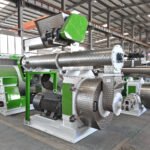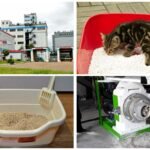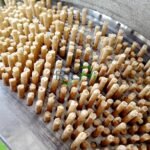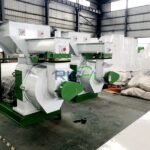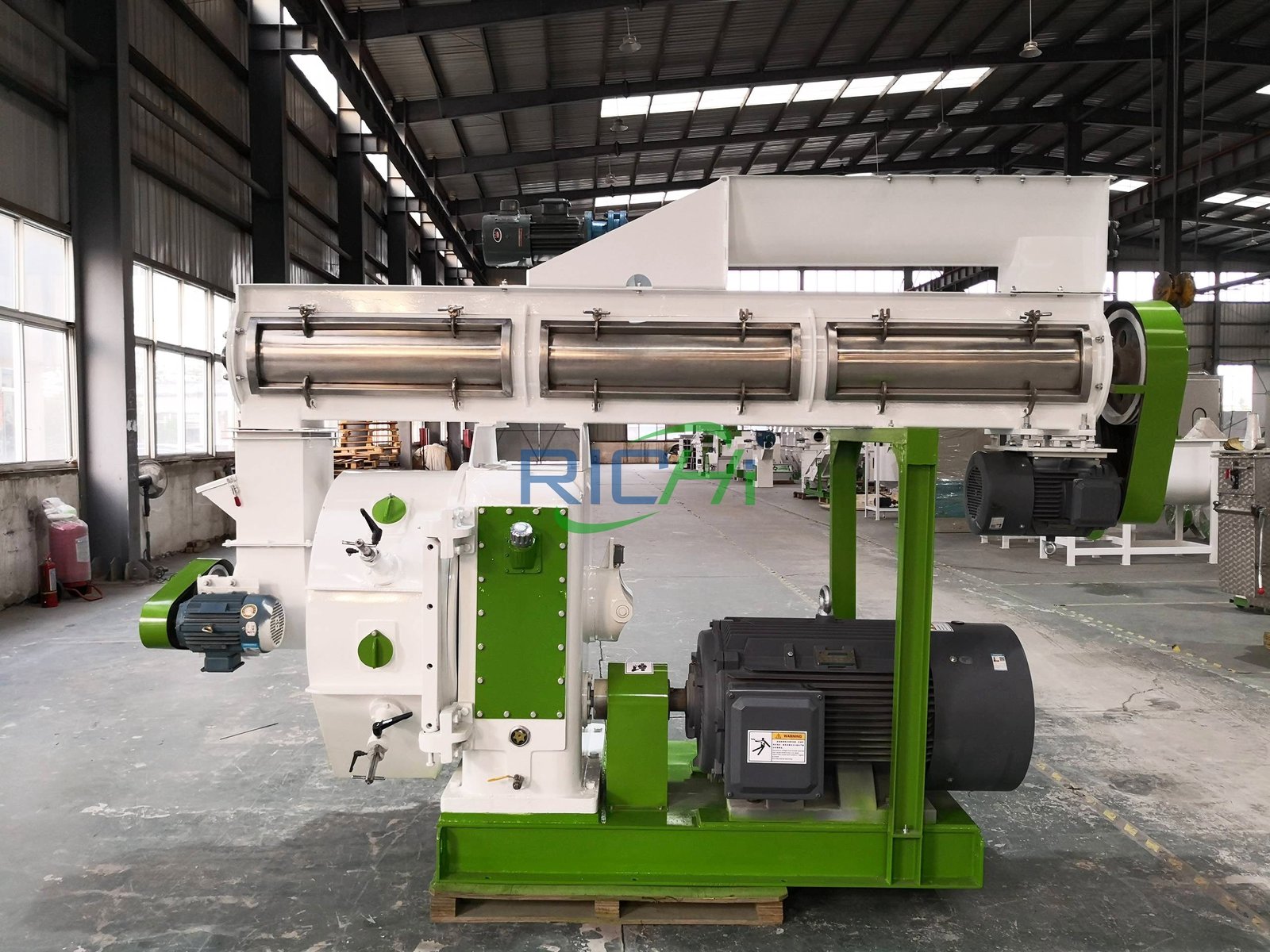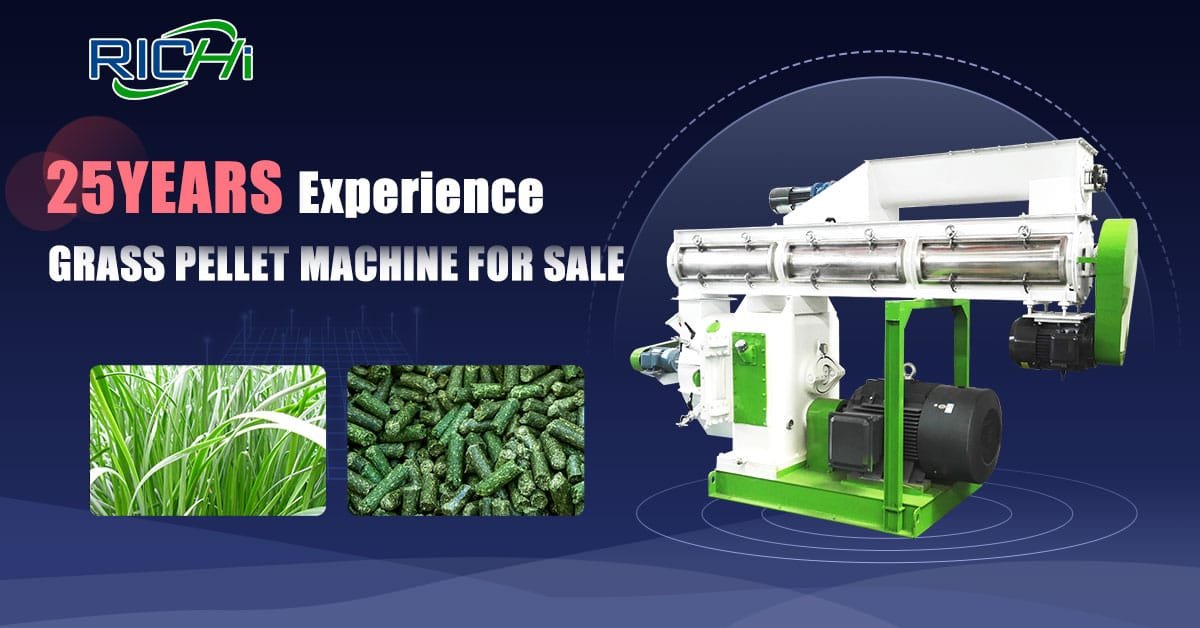Livestock feed pellet machines are essential components of modern feed mills, acting as the backbone of efficient and high-quality animal feed production. These machines convert raw feed ingredients into compact, digestible pellets, offering numerous advantages for both feed manufacturers and livestock producers. This article delves into the diverse roles of livestock feed pellet machines in feed mills and their influence on the animal feed industry.
Enhancing Feed Efficiency
A primary function of livestock feed pellet machines is to boost feed efficiency:
- Minimized Feed Wastage: Pelletizing prevents ingredient segregation, reducing feed wastage.
- Improved Nutrient Digestibility: The pelletizing process enhances the digestibility of certain nutrients, leading to better feed conversion ratios.
- Easier Consumption: Pellets are more accessible for animals to consume, potentially increasing feed intake and growth rates.
Improving Feed Quality and Consistency
These machines significantly contribute to the quality and consistency of feed:
- Uniform Nutrient Distribution: The pelletizing process ensures even nutrient distribution throughout the feed.
- Enhanced Feed Safety: Heat treatment during pelletizing helps reduce harmful pathogens, improving feed safety.
- Consistent Size and Shape: Pellets maintain uniform size and shape, facilitating portion control and effective feeding programs.
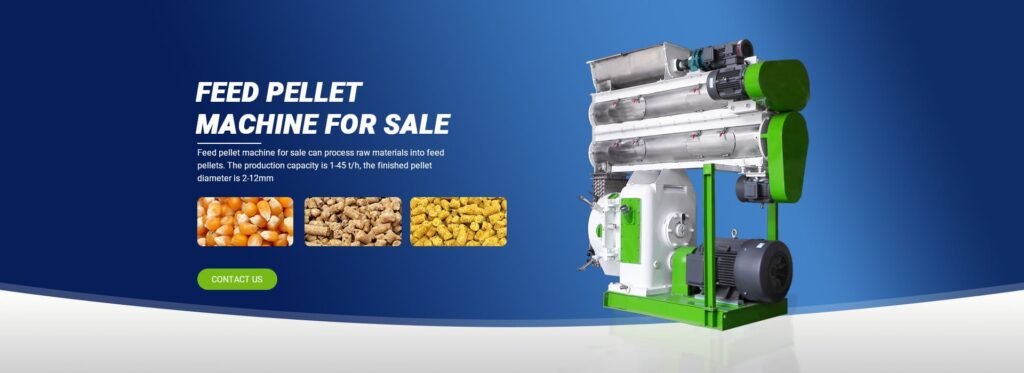
Increasing Feed Density
Pellet machines compress feed ingredients, enhancing the bulk density of the final product:
- Space Efficiency: Higher-density feed occupies less storage space, lowering storage and transportation costs.
- Efficient Packaging: Increased density allows for more efficient handling and packaging of feed products.
- Nutrient Intake: Denser feed can benefit certain livestock species by allowing for higher nutrient intake per feeding.
Facilitating Custom Feed Formulations
Modern livestock feed pellet machines offer flexibility in feed production:
- Ingredient Versatility: They can process a wide variety of ingredients, enabling customized feed formulations.
- Tailored Pellet Sizes: Different die sizes can produce pellets suitable for various livestock species and life stages.
- Incorporation of Additives: The ability to add supplements during the pelletizing process allows for the creation of specialized feeds.
Enhancing Feed Palatability
The pelletizing process can improve the taste and texture of feed:
- Improved Flavor Profiles: Heat treatment during pelletizing enhances flavor.
- Animal Appeal: The uniform shape and size of pellets are often more appealing to animals than mash feeds.
- Increased Feed Intake: Enhanced palatability can lead to greater feed consumption and better animal performance.
Reducing Dust and Improving Air Quality
Pelletized feed generates significantly less dust compared to mash or ground feed:
- Better Air Quality: Reduced dust improves air quality in feed mills and on farms.
- Health Benefits: Lower dust levels contribute to better respiratory health for both workers and animals.
- Minimized Feed Losses: Dust reduction also decreases feed losses during handling and transportation.
Enabling Efficient Feed Processing
Livestock feed pellet machines streamline feed production:
- Integration with Other Equipment: They work well with other feed mill machinery, such as mixers, conditioners, and coolers.
- Automated Controls: Modern machines often feature automated controls, enhancing production efficiency.
- High Capacity: High-capacity pellet machines meet the demands of large-scale feed production.
Facilitating Feed Safety and Traceability
Pellet machines play a role in ensuring feed safety and traceability:
- Pathogen Elimination: The heat treatment during pelletizing helps eliminate certain pathogens.
- Quality Control: Uniform pellets facilitate the implementation of quality control measures.
- Batch Processing: Pellet machines support feed traceability and recall procedures when necessary.
Improving Feed Stability and Shelf Life
Pelletized feed generally has better stability and a longer shelf life compared to non-pelletized feed:
- Reduced Oxidation: The compaction of ingredients in pellets minimizes exposure to air, slowing oxidation.
- Moisture Resistance: Pellets are less prone to moisture absorption, decreasing the risk of mold growth.
- Extended Storage: Improved stability allows for longer storage periods and broader distribution networks.
Enabling Value-Added Feed Products
Livestock feed pellet machines enable the production of value-added products:
- Specialty Pellets: They can create specialty pellets for niche markets, such as organic or non-GMO feeds.
- Medicated Feeds: These machines facilitate the precise dosing of pharmaceuticals in medicated feeds.
- Premium Products: They allow for the production of premium feed products with specific nutritional profiles or performance-enhancing additives.
Supporting Sustainable Practices
Modern livestock feed pellet machines contribute to sustainability in feed production:
- Reduced Energy Consumption: Efficient pelletizing can consume less energy compared to other feed processing methods.
- Utilization of By-products: The ability to incorporate by-products and alternative ingredients supports circular economy practices.
- Lower Environmental Impact: Improved feed efficiency from pelletized feed can result in a reduced environmental impact from livestock production.
Enhancing Feed Mill Profitability
The use of livestock feed pellet machines can positively affect a feed mill’s profitability:
- Higher Market Prices: Pelletized feed typically commands higher prices compared to mash feed.
- Lower Operating Costs: Enhanced production efficiency can lead to decreased operating costs.
- Diverse Product Range: The capacity to produce a variety of feed products allows mills to serve different market segments.
Facilitating Feed Export
Pelletized feed is often favored in export markets:
- Reduced Shipping Costs: The compact nature of pellets minimizes shipping expenses.
- Transportation Stability: Pellets exhibit better stability during long-distance transport.
- Market Preferences: Many international markets prefer pelletized feed products.
Supporting Precision Livestock Farming
Livestock feed pellet machines assist in precision livestock farming practices:
- Consistent Feeding Strategies: Uniform pellet size and nutrient distribution allow for more precise feeding strategies.
- Custom Formulations: The ability to create custom formulations supports phase feeding and targeted nutrition programs.
- Compatibility with Automation: Pelletized feed works well with automated feeding systems used in precision livestock farming. (Related post:cow pellet machine )
Conclusion
Livestock feed pellet machines play a vital and multifaceted role in modern feed mills. By enhancing feed efficiency and quality, supporting sustainable practices, and boosting profitability, these machines are essential in meeting the evolving demands of the animal feed industry. As livestock production advances with a focus on efficiency, sustainability, and animal performance, the significance of feed pellet machines in feed mills is likely to increase.
For feed mill operators, investing in high-quality livestock feed pellet machines and optimizing their utilization can lead to improved product quality, enhanced operational efficiency, and better market positioning. With ongoing technological advancements, further innovations in pellet machine design and operation are anticipated, offering even greater benefits for feed mills and the livestock industry as a whole.



